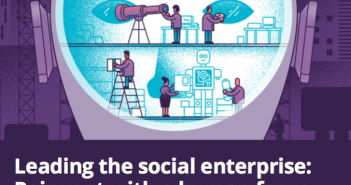
How emojis are the next step in digital communication
Editor’s note: Research shows that emojis play an important role as gestures in digital communications. How is L&D using emojis in digital comms?

Editor’s note: Research shows that emojis play an important role as gestures in digital communications. How is L&D using emojis in digital comms?

Editor’s note: This research report takes a deeper look at the concept of inclusive leadership. It includes a list of 15 core competencies which are well worth a look. You would want your leaders to display some, if not all, of these behaviours.

Editor’s note: UK media regulator Ofcom has produced a report looking at the trends in how people consume video and audio content. The interactive version of the report lets you dive into trends by age category. This is useful data for understanding how people consume content.

Editor’s note: A large study of UK school children has shown that those who followed a growth mindset approach to maths and literacy made no more progress in literacy and numeracy than those in the control group.

Editor’s note: New research from Degreed shows that only 40% of workers agreed that their manager helps them to understand what skills they need to advance in their careers and 22% said their managers do not encourage learning at all. It would seem that winning over managers to support team and individual development remains a challenge for organisations.

Editor’s note: You need to look beyond the not-so-snappy title of this slide deck in order to find a treasure trove of stats about the web. This is one of those resources you might find useful when making the case for digital. There are some eye-wateringly large numbers here.

Editor’s note: This research from learning supplier Kineo shows that employees want better learning content and opportunities to learn but what employers provide falls well short of expectations. This research provides a useful snapshot of what the ‘consumer’ learner is looking for.

Editor’s note: David Perring, director of research at Fosway Group, shares some insights into how L&D teams are measuring impact and the challenges these approaches present to reaping the benefits of digital learning.

Editor’s note: the UK’s Office for National Statistics has produced a report on the characteristics and benefits of training at work. This is the first time the ONS has produced such a report. Interestingly, and maybe not surprisingly, older workers get the least amount of training. there are also some disparities between men and women and full-time and part-time workers.

Editor’s note: Deloitte have published their latest annual report on human capital trends. at 112 pages, it is quite a read. This year’s top trend is learning – go to page 78 of the report to find insights on how learning needs to change to meet the needs of the workforce now and into the future. Central to this is learning in the flow of work.

How to solve a problem like L&D, KnowledgePool. Why read this report This report is…

Editor’s note: Research confirms what you might already suspect, that our attention spans are diminishing due to the increasing amounts of information that is pushed our way. This puts into perspective the challenge L&D has in gaining employees’ attention.

Editor’s note: Would a shorter working week help solve the UK’s productivity problem and at the same time boost employees’ health and well-being? This article takes a look.

Health and well-being at work survey 2019, CIPD/Simplyhealth Why read this report? Read this report…

Editor’s note: The reason is not what you think. This is not an ego issue, rather an issue of empowerment. Research suggests that managers aren’t empowered to act on ideas from their teams. Rather they are encouraged to follow short term goals, which get in the way of pursuing ideas that might affect those goals and have longer term benefits.
